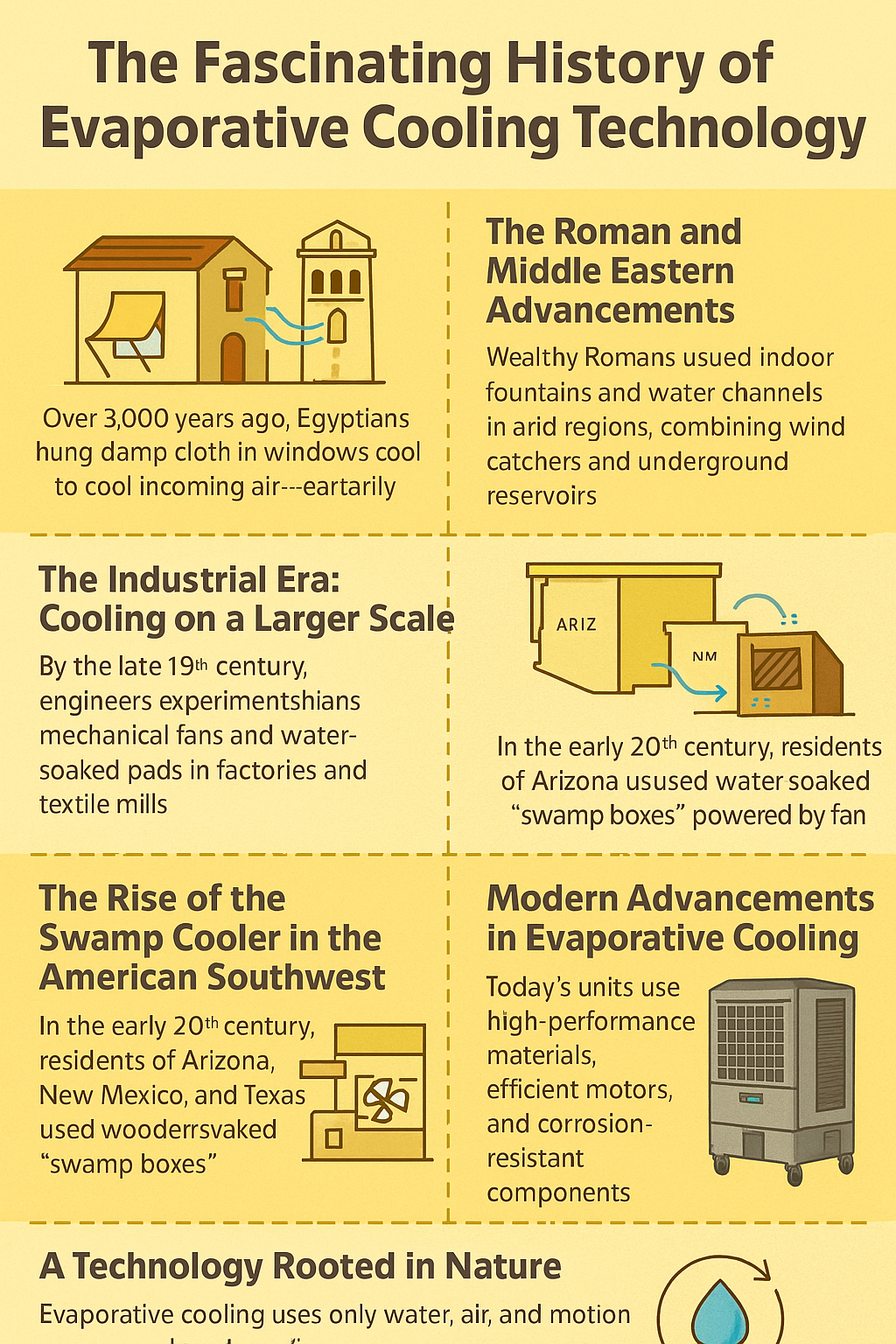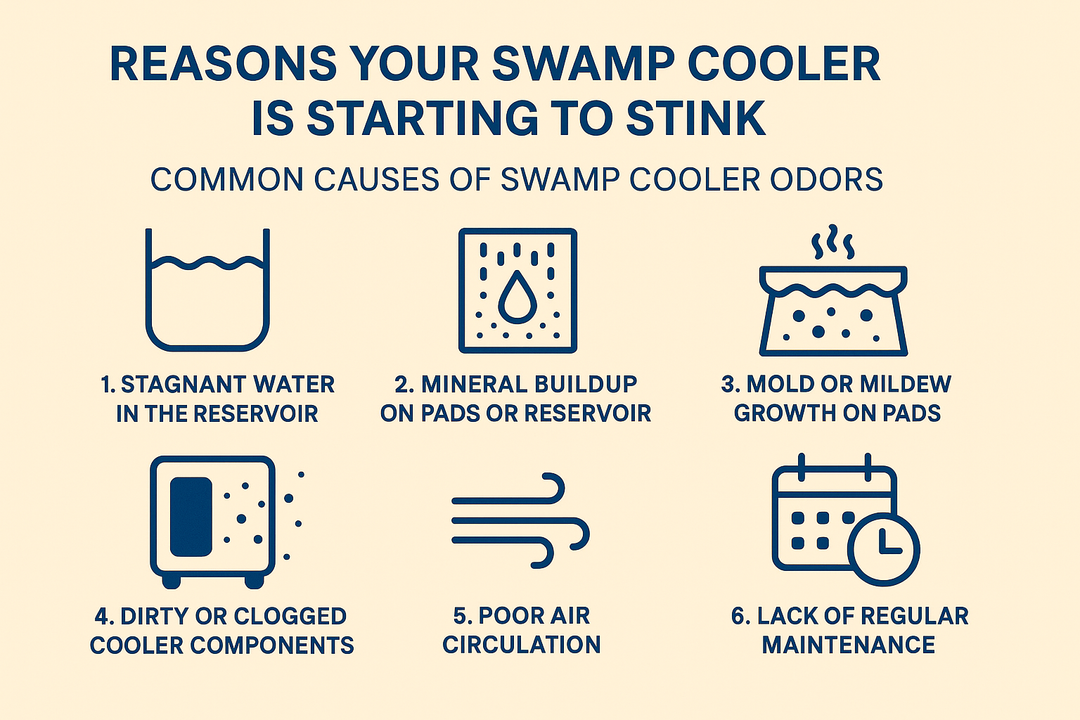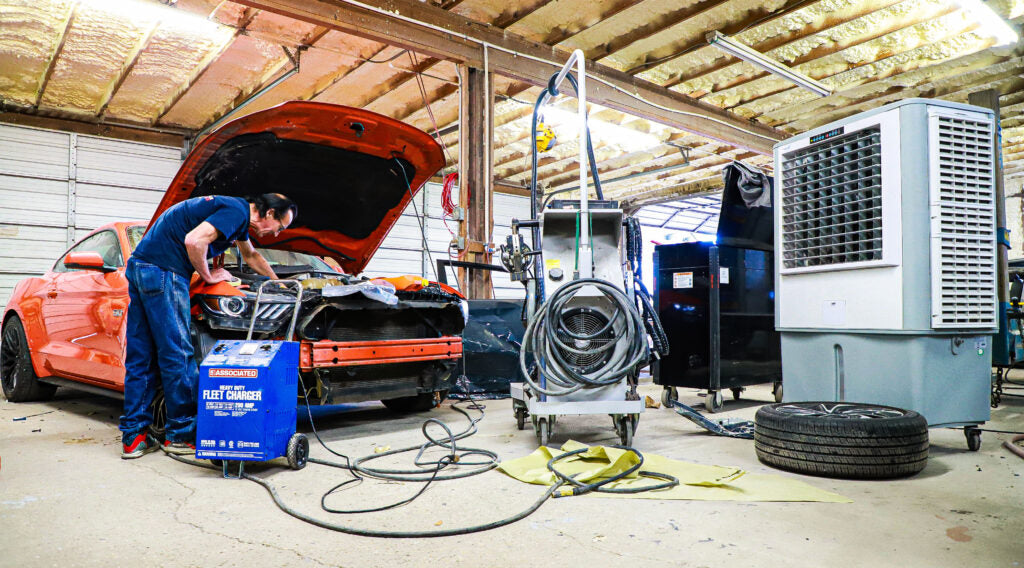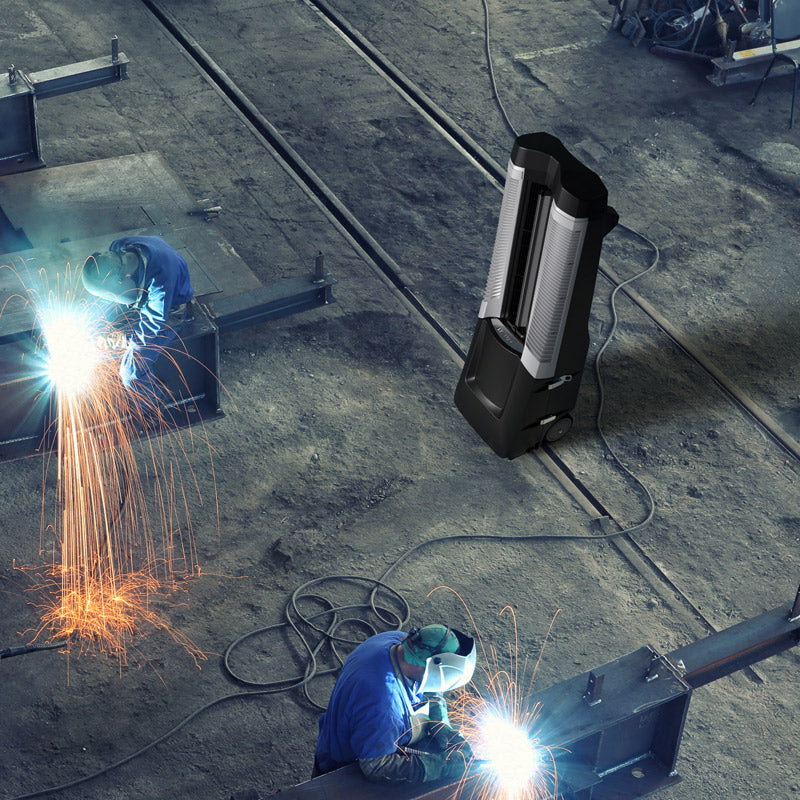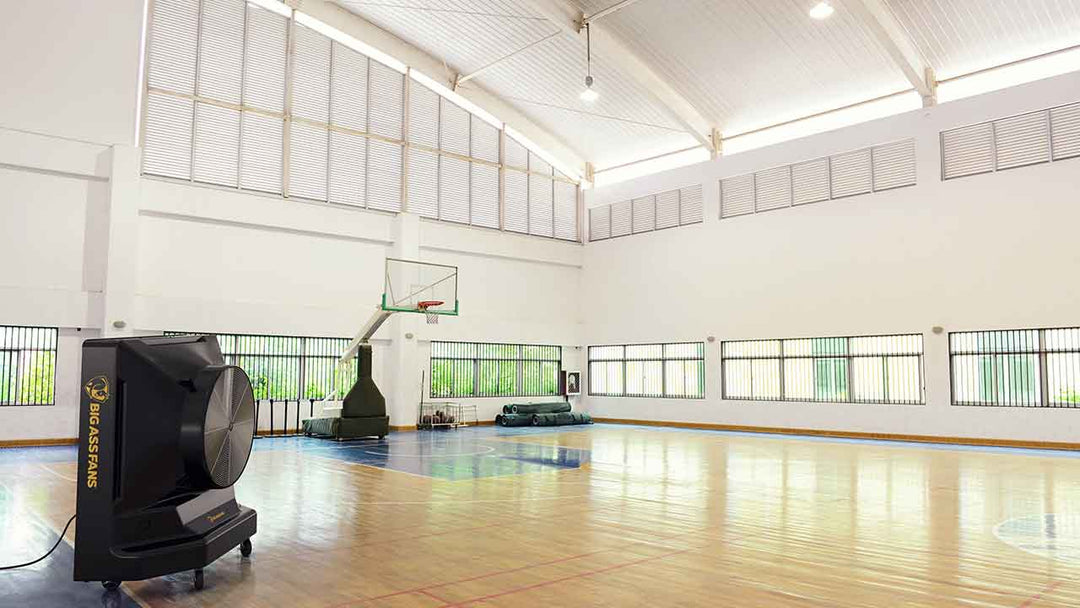Reasons Your Swamp Cooler Is Starting To Stink
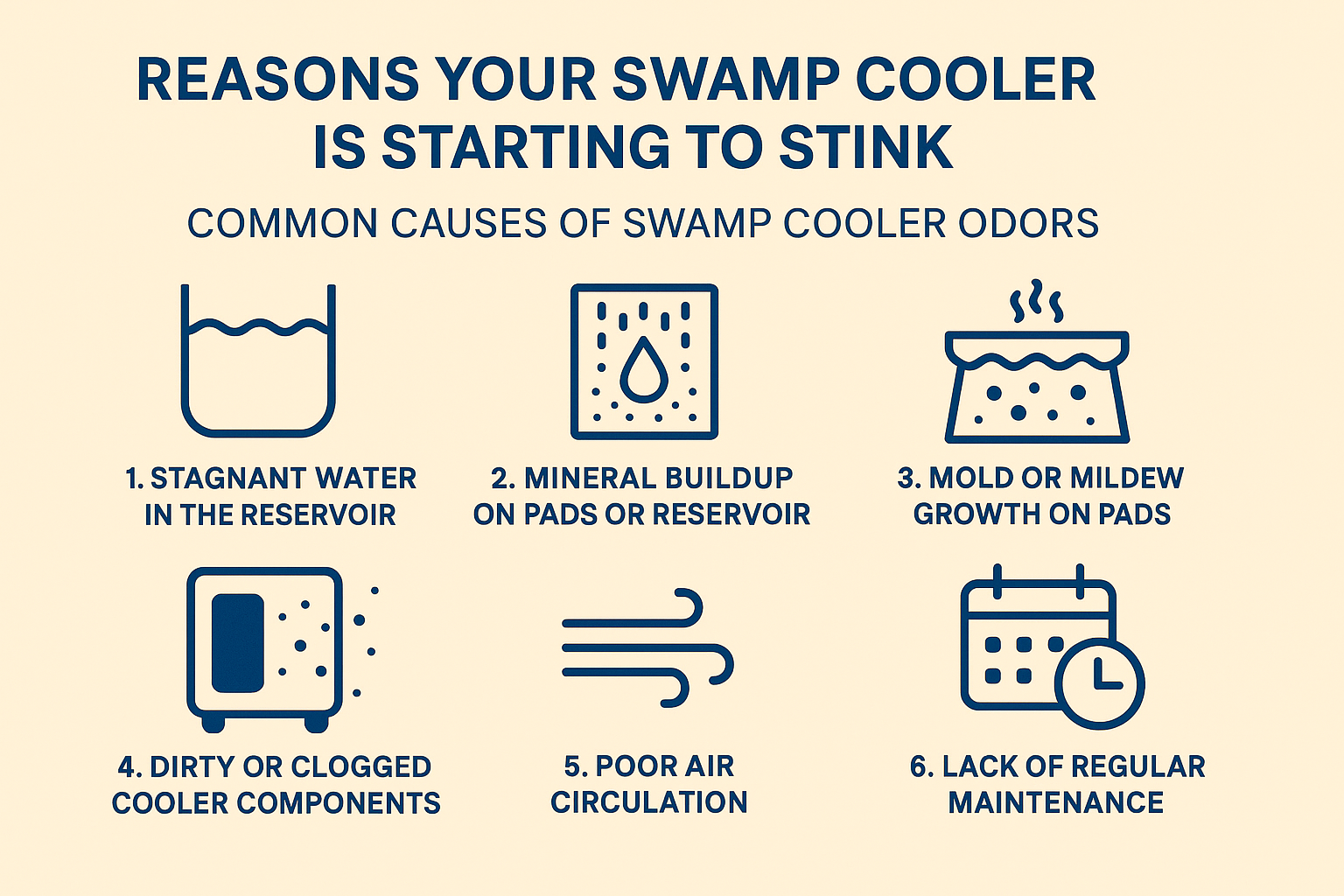
Common Causes of Swamp Cooler Odors
If your swamp cooler is starting to give off an unpleasant odor, you’re not alone. Over time, evaporative coolers can develop musty, moldy, or even fishy smells — all signs that it’s time for maintenance. Understanding what causes these odors is the first step to fixing the problem and keeping your cooler running smoothly all season long.
1. Stagnant Water in the Reservoir
One of the most common causes of swamp cooler odor is stagnant water. When water sits unused for too long, it becomes a breeding ground for bacteria and algae. This can create a sour or musty smell that quickly spreads through your space.
Quick Fix:
Drain and replace the water at least once a week during heavy use. If you store your cooler for the season, always empty it completely before covering it.
2. Mineral Buildup on Pads or Reservoir
If you live in an area with hard water, mineral deposits can collect on the pads and inside the reservoir. These deposits trap bacteria and debris, leading to that familiar “dirty sock” smell.
Solution:
Use EVAP-O-Matic tablets — simple drop-in tablets that help control mineral buildup, algae, and scale formation. They’re safe for all major evaporative cooler brands like PortaCool, Big Ass Fans, Cajun Kooling, Cool Boss, and Vector.
3. Mold or Mildew Growth on Pads
When pads stay damp for too long without proper airflow, mold and mildew can start to form. You’ll usually notice a musty or earthy odor when this happens.
How to Fix It:
Replace the pads if they appear slimy or discolored. Regularly running your fan after shutting off the pump for a few minutes can help dry the pads and prevent mold growth.
4. Dirty or Clogged Cooler Components
Dust, pollen, and debris can collect inside your cooler, especially if it’s been sitting unused. As this organic material breaks down, it can create foul smells that spread with every cycle.
Maintenance Tip:
Wipe down internal surfaces and clean the reservoir every few weeks. You can use a mild vinegar solution to disinfect without damaging your cooler components.
5. Poor Air Circulation
Sometimes the problem isn’t inside the cooler — it’s in your space. If airflow is restricted, moisture can build up, causing musty odors to linger.
Try This:
Keep doors or windows open slightly when your swamp cooler is running. This ensures fresh air circulation and prevents humidity from becoming trapped indoors.
6. Lack of Regular Maintenance
Like any cooling system, your swamp cooler needs periodic cleaning and inspection. Ignoring maintenance allows bacteria, minerals, and mold to accumulate, resulting in bad smells and reduced performance.
Prevention Schedule:
-
Weekly: Check water level and drain old water.
-
Monthly: Add EVAP-O-Matic tablets to prevent buildup.
-
Seasonally: Deep clean pads, reservoir, and water lines before and after storage.



